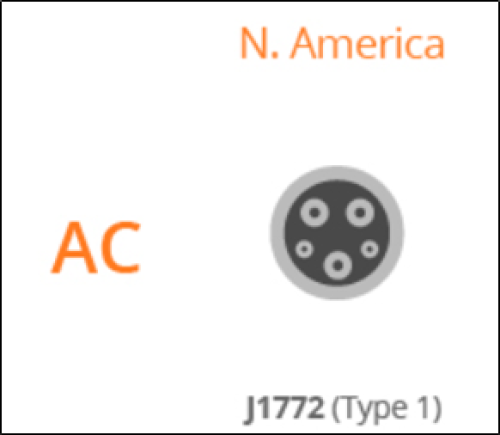What is the difference between Alternating Current and Direct Current charging?
The differences between alternating current (AC) and direct current (DC) charging for electric vehicles are listed in the table below.
| Charging Type | Charging Information | Charger Image |
| AC |
|  |
| DC |
|  |
| Rapid DC |
|  |
Additional Information
Range and Charge time are based on manufacturer computer engineering simulations. The Charging rate, when charging using DC chargers, decreases as battery reaches full capacity. The results may also vary based on peak charging times and battery state-of-charge (SoC). In addition, actual vehicle range varies with conditions such as external elements, driving behaviors, vehicle maintenance, lithium-ion battery age and state of health.